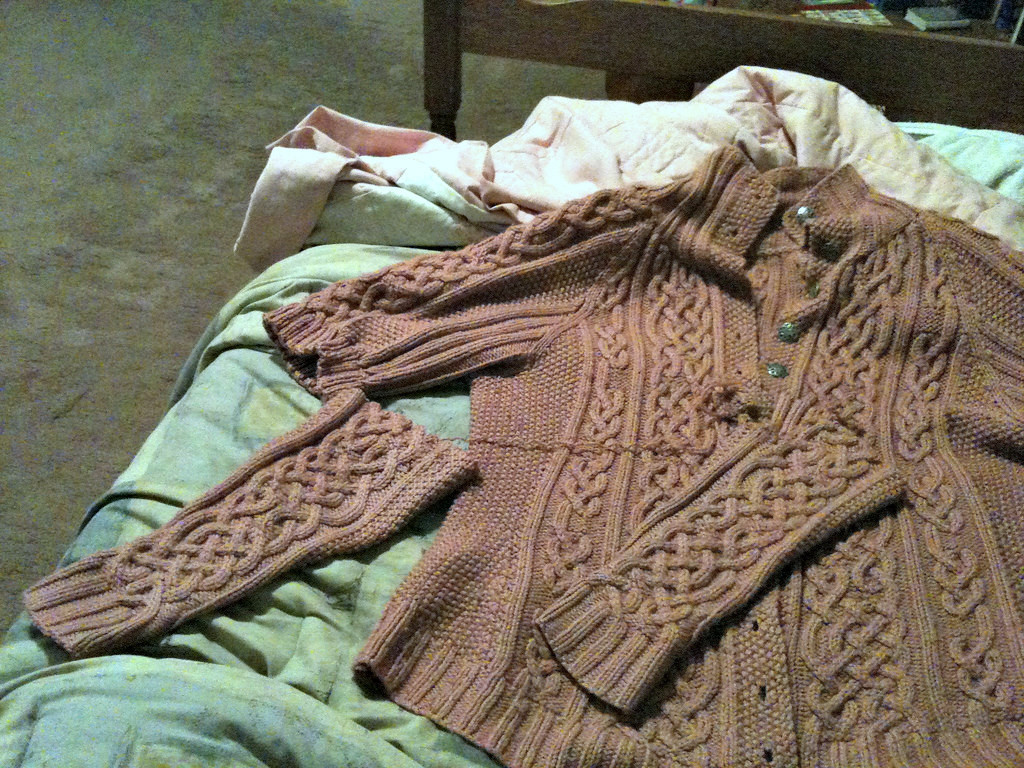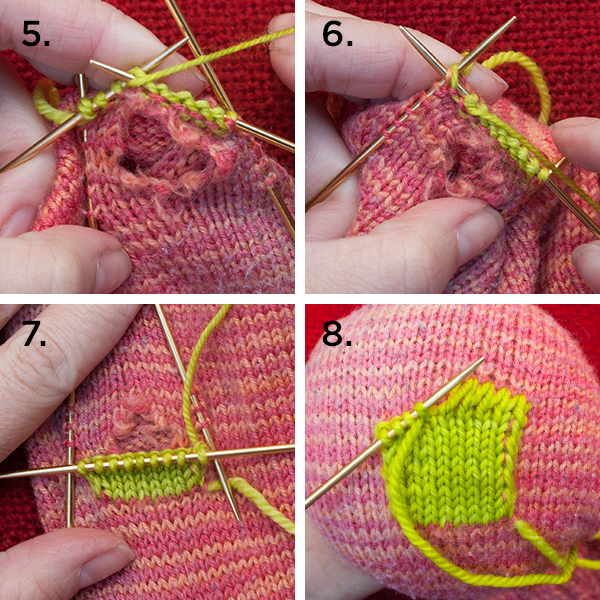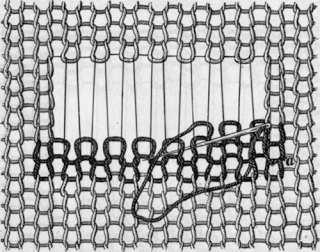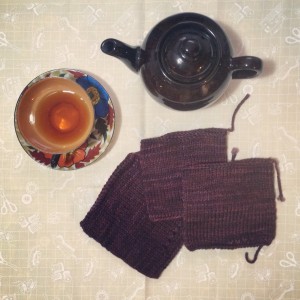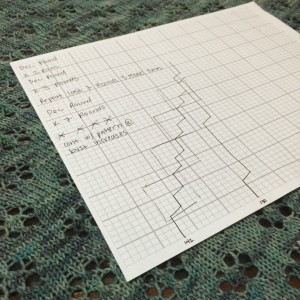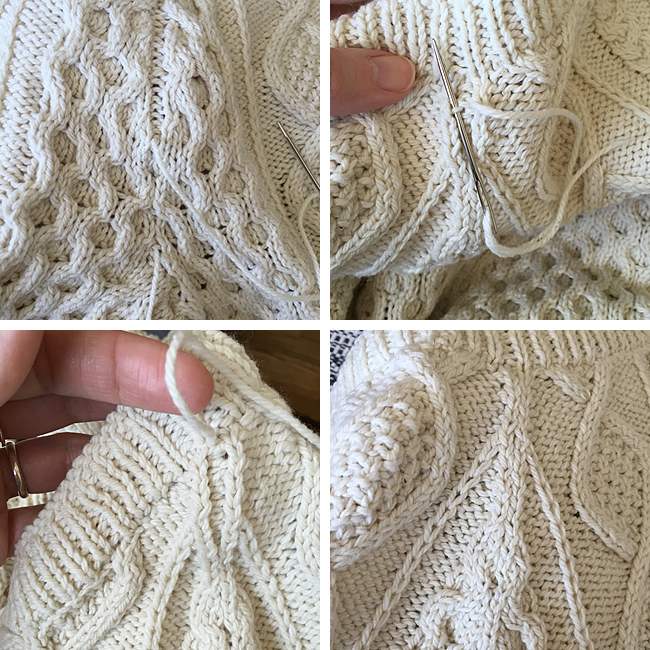Making it last
The word heirloom has a magical sort of connotation to it. For many knitters, we want the piece to outlive ourselves. we want it to be loved, worn and passed down from generation to generation, but heirloom oftentimes becomes the pretty piece that is worn once, then put away for the next generation.
Hidden away.
Children have no idea that pulling on that thread can unravel priceless pieces of history. Those of us with desk jobs forget that leaning on our elbows thins the lovingly worked stitches to the point of disintegration. Even the most mindful garment wearer will eventually walk their way through carefully turned heels.
What are knitters, and knitwear owners to do?
All October, coined Slow Fashion October by Karen Templer of Fringe Association, I have been researching darning techniques. I’ve been trying to answer the question of how to make my pieces last.
This is my Durrow Cardigan. It was my first foray into original sweater design, and the most expensive investment I’d made to that date. When the elbows wore through, I didn’t know any darning techniques, but I was determined to save this sweater. Next time, I’ll be prepared.
One of my favorite knitwear darning resources is Twist Collective’s post called Darn it All! There are several different options for fixing those holes including this adorable grafted patch.
Sometimes a piece needs more care; more natural replacement of the missing section. I’ve found this article on something called reknitting or swiss darning. It looks complicated, but for those pieces you truly love, it’ll be worth it.
K. Line wrote the following about it:
I won’t even try to explain it, though Sockupied does, very well, but after creating the stabilizing thread frame around the hole (mentioned above but not shown in the illustration), you actually use a double strand of regular thread to create a kind of loom over the hole. Then you weave into and out of one strand of the “loom” thread, stitch-by-stitch re-knitting with a darning needle. If worked in the same yarn, it is utterly indistinguishable from the original garment and it has the same properties of stretch.
Not all items can be saved the same way. Some can be grafted, others require you sacrifice some of the work to save the wearability. In the case of my Durrow Cardigan, I cut the sleeves, and used the good yarn to knit down from the live stitches to replace the ribbing. It’s still a staple in my closet for spring and fall.
We work very hard to create wearable art. Let’s take the time to care for it. It could turn a workhorse into an heirloom.

